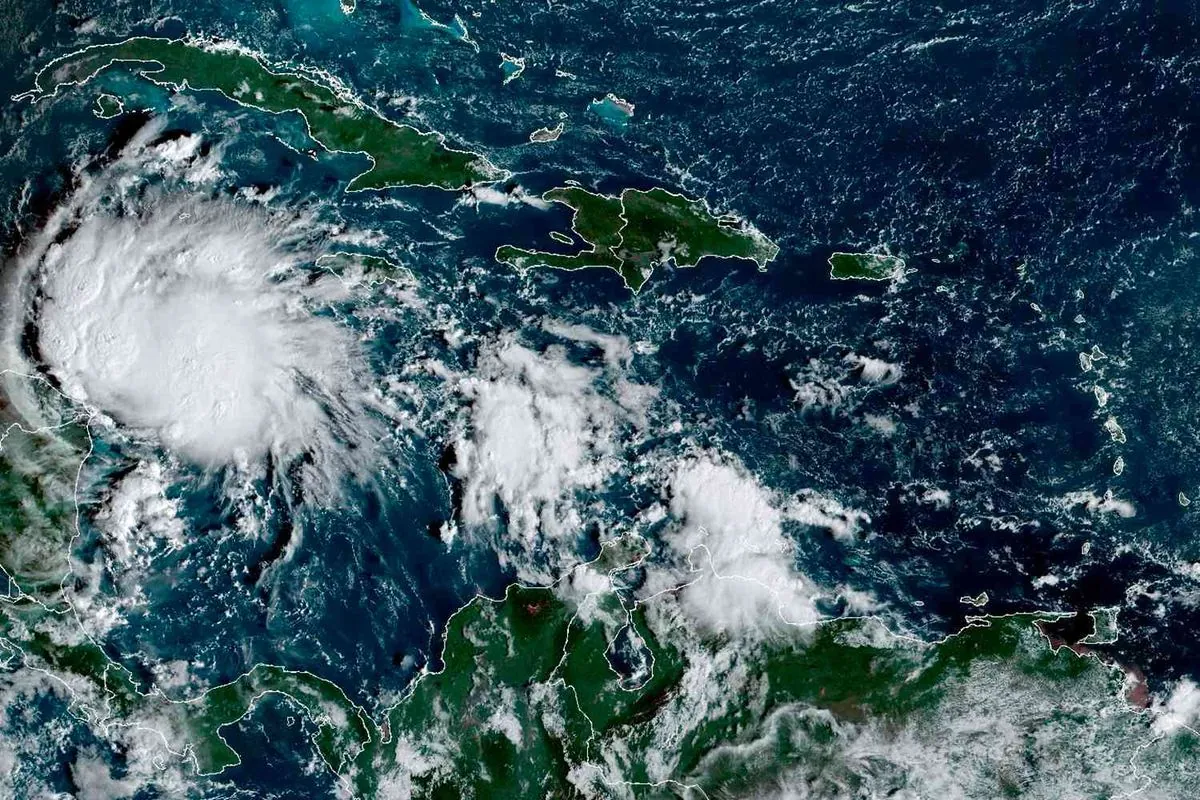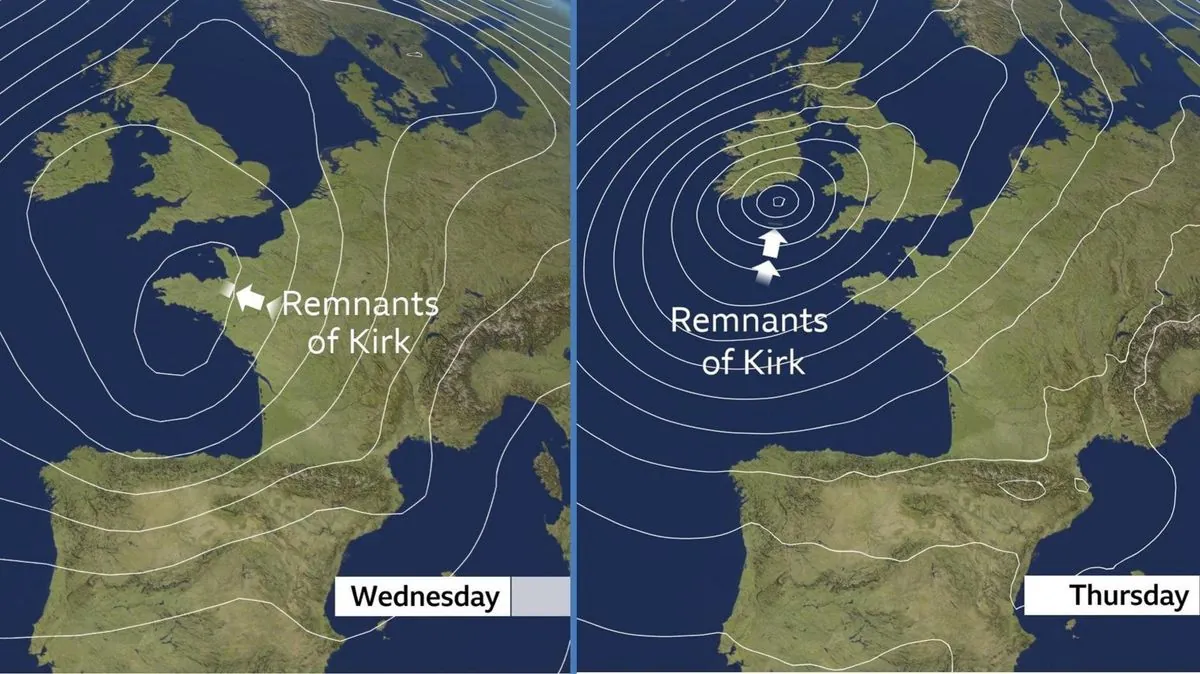Two Atlantic Hurricanes: Leslie Forms as Kirk Remains Powerful
Leslie strengthens to hurricane status in the Atlantic, while Category 4 Hurricane Kirk affects multiple coastal areas. Warnings issued for dangerous surf conditions as rescue efforts continue after Hurricane Helene.

As of October 5, 2024, the Atlantic Ocean is witnessing increased hurricane activity, with Leslie recently intensifying into a hurricane and Kirk maintaining its Category 4 status. These developments occur during the official Atlantic hurricane season, which runs from June 1 to November 30.
Leslie has strengthened into a hurricane approximately 725 miles (1,170 kilometers) west-southwest of the southernmost Cabo Verde Islands. The Cabo Verde Islands are a common formation area for Atlantic hurricanes. Leslie's maximum sustained winds have reached 75 mph (120 kph), meeting the minimum threshold for hurricane classification on the Saffir-Simpson Hurricane Wind Scale. Currently, no coastal watches or warnings are in effect for Leslie.
Meanwhile, Hurricane Kirk remains a formidable Category 4 storm, with maximum sustained winds of 130 mph (209 kph). Category 4 hurricanes typically have sustained winds ranging from 130-156 mph (209-251 km/h). Kirk is located about 975 miles (1,570 kilometers) east-northeast of the northern Leeward Islands.

The effects of Kirk are being felt across a wide area. Its waves are impacting the Leeward Islands, Bermuda, and the Greater Antilles. The Greater Antilles consist of Cuba, Hispaniola, Puerto Rico, Jamaica, and the Cayman Islands. Forecasters predict that swells from Kirk will reach the East Coast of the United States, the Atlantic Coast of Canada, and the Bahamas by the evening of October 5 or the following day.
"These waves could cause life-threatening surf and rip current conditions."
It's crucial to note that rip currents cause an average of 100 deaths annually in the United States, highlighting the severity of this warning.
While Kirk is expected to begin weakening, authorities advise residents of the Azores to monitor the storm's progress, as swells could potentially affect the region by October 7. The Azores, an autonomous region of Portugal in the mid-Atlantic, often find themselves in the path of Atlantic hurricanes.
As these storms churn in the Atlantic, rescue efforts continue in the U.S. Southeast following the impact of Hurricane Helene approximately one week ago. The aftermath of Helene has left a trail of destruction and loss of life, emphasizing the devastating potential of these natural phenomena.
The National Hurricane Center (NHC), responsible for tracking and predicting tropical cyclones, continues to monitor these storms closely. Hurricane hunters, specialized aircraft that fly into tropical cyclones, play a crucial role in gathering data to improve forecasts and warnings.
It's worth noting that climate change is expected to increase the intensity of tropical cyclones in the future. This underscores the importance of continued research and preparedness efforts to mitigate the potential impacts of these powerful storms.


































